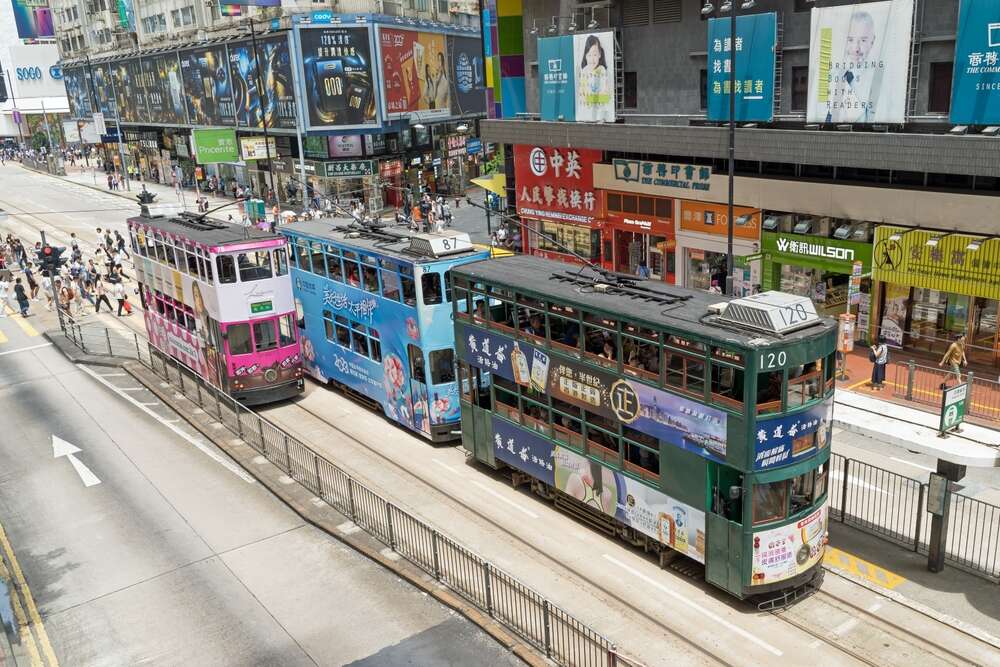
It is likely that many of you will have found using your local public transport an uncomfortable experience – that the amount of difficulty and unease necessary to use it was way out of proportion to the amount of enjoyment or utility derived from the journey itself. This is probably because you were not riding on some part of Hong Kong’s public transport network, which is, I would argue, the best in the world.

Travelling on Hong Kong’s transport network is an experience of sheer joy. A typical working day in Hong Kong begins and ends with a contemplation over which type of transport to use. The MTR (Hong Kong’s rail network)? Or perhaps the tram? One of the armoured-personal carrier-like buses? Or even a ferry?
All such journeys are paid for using the ubiquitous ‘Octopus card’ – essentially a travel card that you can pay for anything with. (Wanna pay for library photocopying? Use your Octopus.)
The development of Hong Kong’s multi-layered transport network was made necessary by two basic characterises of the region: a rapidly increasing population, in part due to immigration from Mainland China, coupled with a small land area would make a transport system centred around the private car unworkable.
The majority of the 9.7 million passenger trips that take place each day in Hong Kong are via the MTR rapid-transit network. Although it only opened in 1979, the network has rapidly expanded to almost every corner of the ‘Special Administrative Region’ since. A recent extension, to the southern side of Hong Kong Island itself, arrived in December 2016; but its construction programme was mired in scandal and controversy, thanks to repeated delays and spiralling costs.
The tiling of each station is colour-coded, the trains are air-conditioned – a merciful release, given the climate – and Wi-Fi is freely available in all the carriages. Even during rush hour at Admiralty, the hub of Hong Kong’s legal sector, the exceedingly wide platforms easily distribute the large crowds. And the frequent – and rarely late – trains mean peak hours are no true impediment to travelling.
So far, so functional. But what really sets the MTR network apart is the extent to which each individual station stretches like a labyrinth across the cityscape.
Take Sai Ying Pun on the Island Line. You can walk in from one entrance and emerge, after a crisp travellator journey, in a different area of town altogether. Or, if you’re alighting in the centre of town, you can seamlessly exit the station into a towering shopping centre. It’s hard to imagine a better-integrated network.
One caveat is in order: people stand on both sides of the escalator. It is hard to find the right words to describe how I feel about this without descending into hyperbole. I will merely say that this makes me feel like shooting myself into the sun. In a metro network defined by its commitment to functionality, the acceptance of this behaviour baffles me.
But not everything about Hong Kong is like living in a libertarian fever dream. During my short commute I am moved by the regularity with which I see couples, obviously working jobs at different stops, sharing a short hug or embrace before they disembark; or the looks of utter horror if an individual does not give up their seat for an elderly traveller. As the Los Angeles Times’ food critic Jonathan Gold, once said: “We are all citizens of the world; we are all strangers together” – and it is observing moments such as these that allow you, even for a second, to feel a little bit closer to the stranger sat next to you, on the machined aluminium seating of an MTR train.
Alternative routes on the Hong Kong transport network
So what if you need to travel across the island in a narrow strip and the MTR doesn’t take your fancy? What then?
Well, then, there’s the tram network awaiting your custom. Hong Kong operates the only fleet of double-decker trams in the world, and for a low price, you can step into this relic from the colonial era. For my money, it is also the source of the greatest minute-for-minute enjoyment that can be gleaned legally on any public transport system. Riding atop one of these jerking land-beasts better resembles a theme park ride than a journey in a highly organised transport network.
The Star Ferry – another Hong Kong classic– also falls under the heading of, ‘It is ludicrous that something so pretty only costs this much’. Running from the island piers to the mainland on Kowloon side, the journey between the two has sadly been progressively shortened by successive waves of land reclamation. Lasting all of ten minutes, the Star Ferry remains the most stately way of traversing the harbour – if you don’t mind feeling like a tourist or potentially being late for work.
Sure, the Ferry might be outmoded by several tunnels across the harbour, and the trams now seem overwhelmed by the surrounding traffic. But, if you love Hong Kong, as I have come to, and you have ten minutes before or after work and want to experience something beautiful, then you do not need to travel any further than the pier or the tramway.
Modern transport networks often bare the fundamental utility of their purpose overtly. In Hong Kong, with its trams and Star Ferry, it is possible to experience something much subtler: forms of transit that are truly embedded within the city they serve.
[Read more: Hong Kong is ready to be a smart city]






